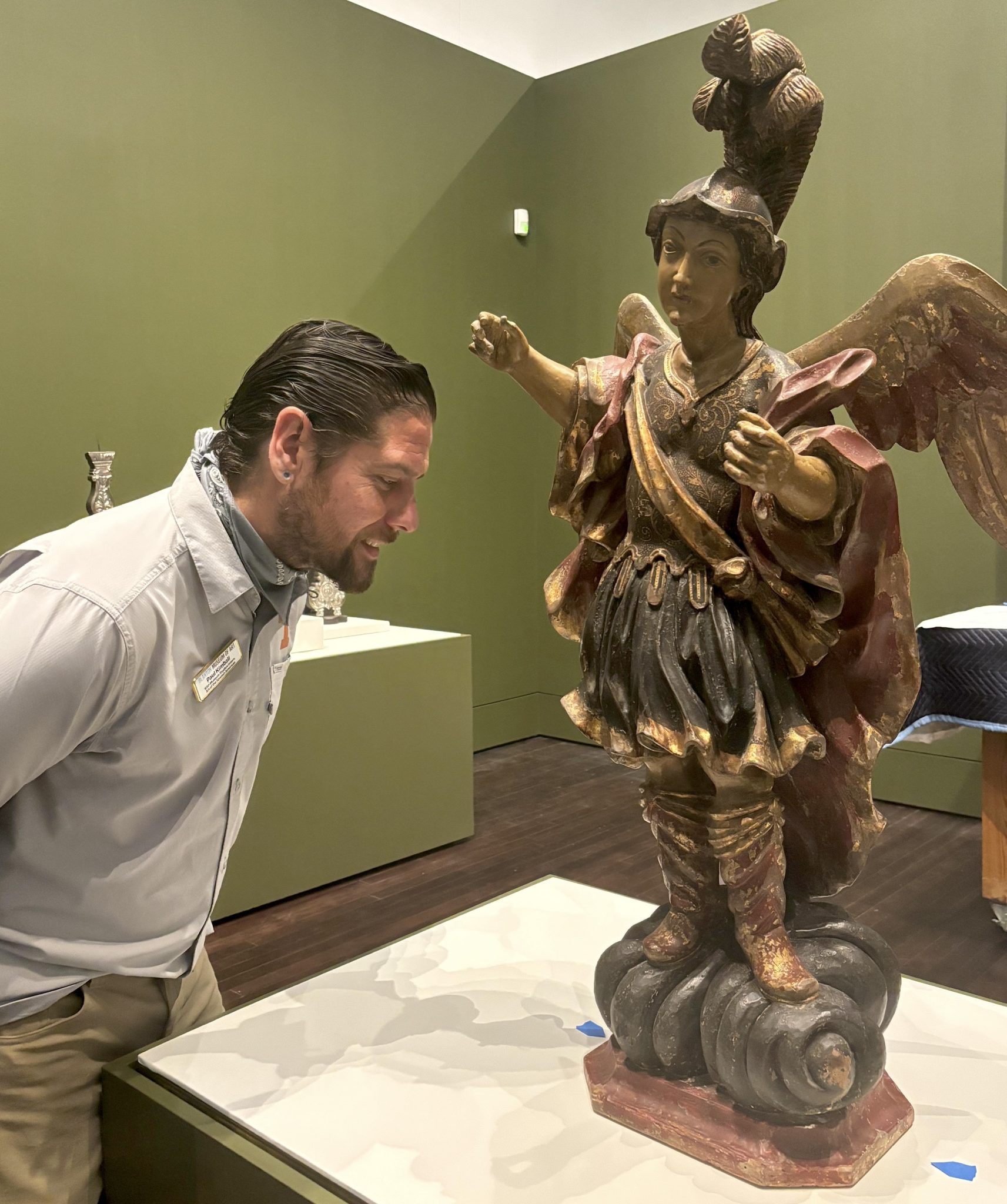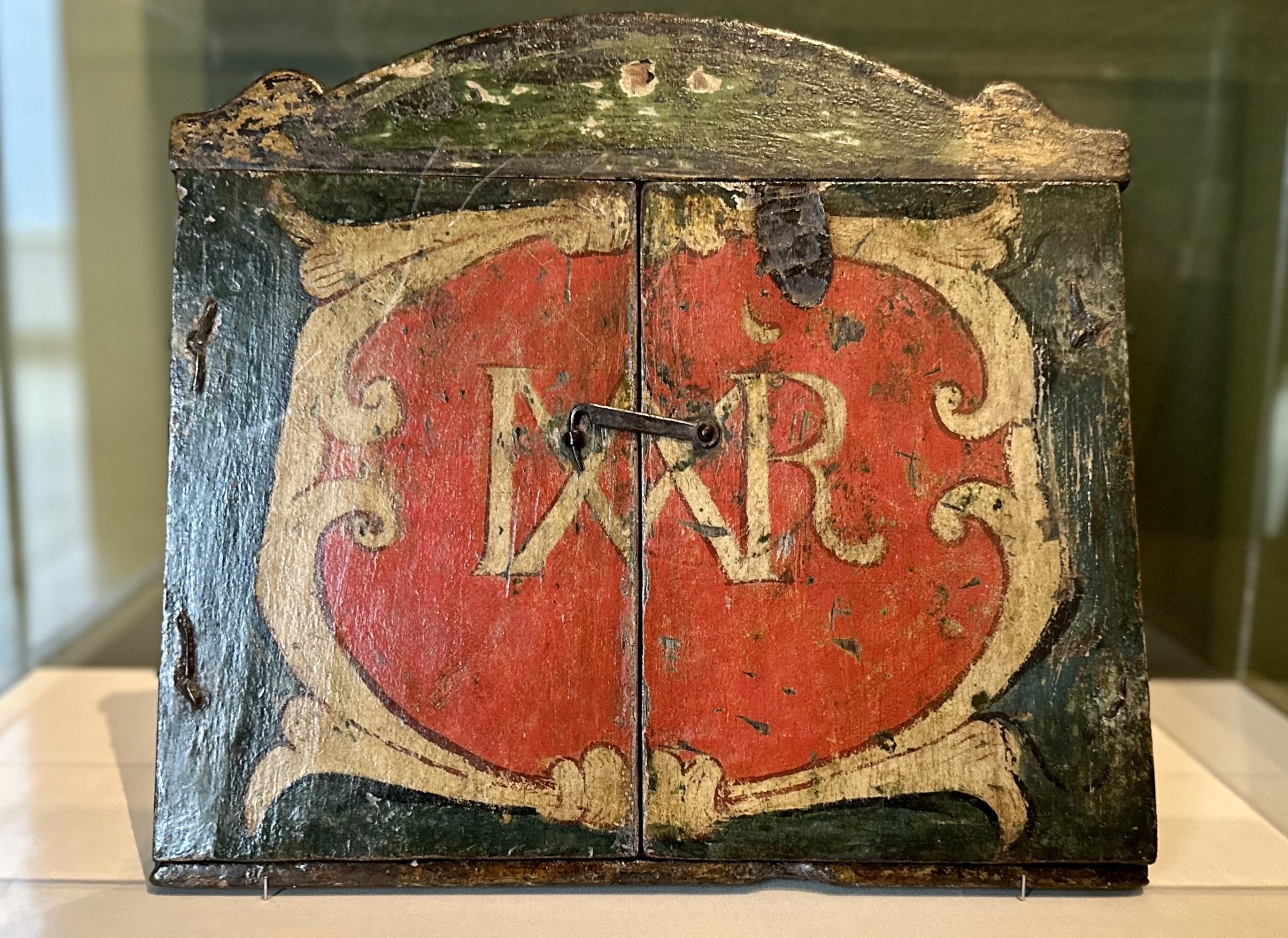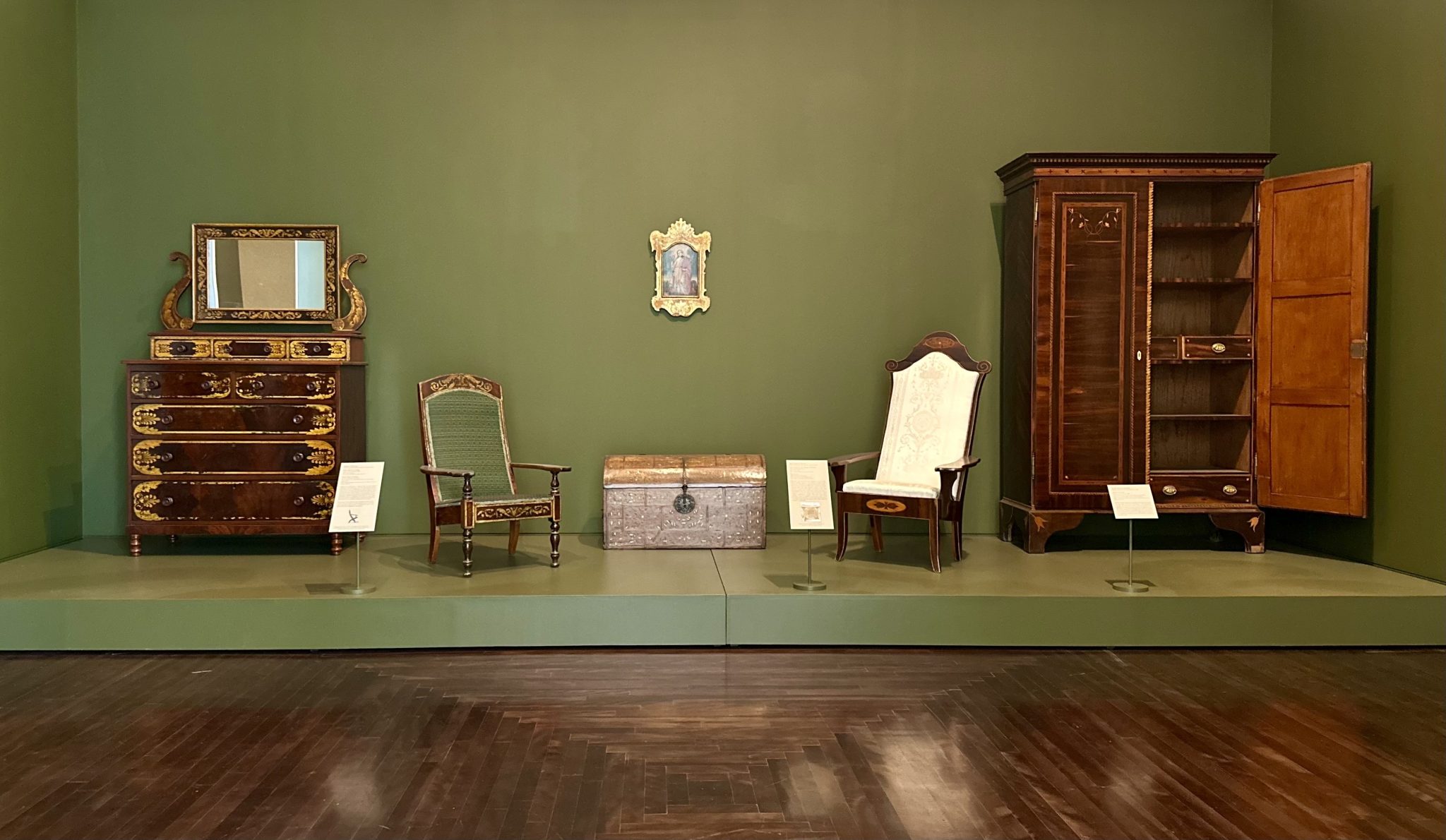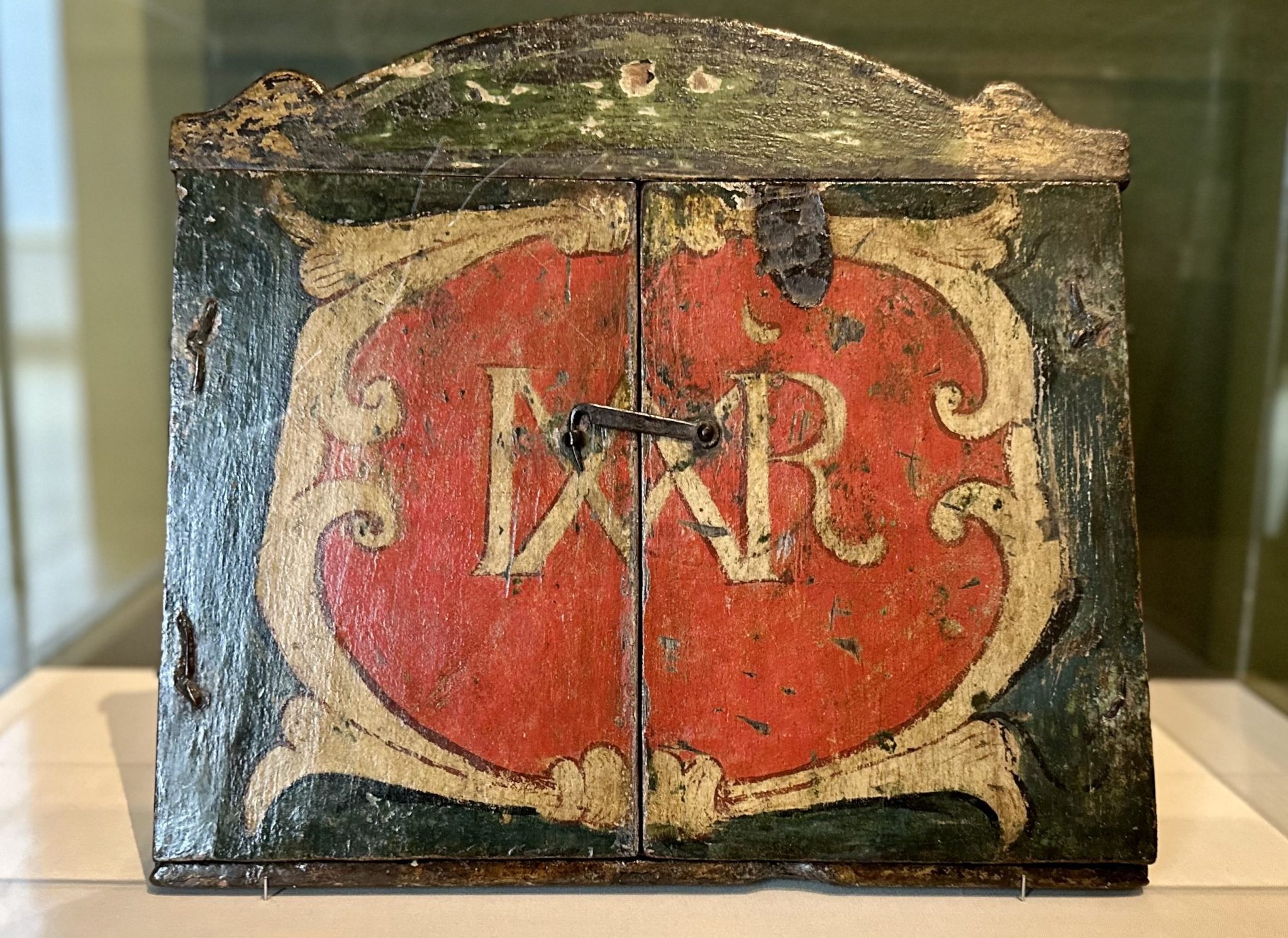Appreciating Art as a Mestizo American
by Paul e. Kimball III, 2024 Bridging Disciplines Program (BDP) in Museum Studies, Art of the Spanish Americas, Blanton Museum of Art
The Americas: North, Central, and South. Latin, Portuguese, and Spanish. Turtle Island and Abya Yala. Different names are given to this land where nature, humanity, and culture come together as an infinite muse for artistic expression. Beautiful evidence of this inspiration can be appreciated at the Blanton Museum of Art. As a student in the Bridging Disciplines Program (BDP) in Museum Studies last semester (2024), I had the opportunity to intern within the Art of the Spanish Americas area, interacting with pieces from the Blanton’s collection featured since May 2024 in the annual rotation of these permanent galleries. These objects have changed my perspective on the history of the Americas and even allowed me the gift of reflecting upon my own journey toward understanding my identity as an American.
Born of a father from Massachusetts and a mother from Medellín, my dual heritage has been the strongest theme throughout my life. I self-identify as an American, not because I have U.S. citizenship, but because my roots are both North and South American, and I use “American” as a term that is inclusive of the American continent as a whole, as most people do outside the U.S. In this way, I recognize the cultural intersection and stitches of consistency that help me feel complete. That is also the main reason this blog entry has a Spanish version, as both languages make me who I am.

As an intern in the Art of the Spanish Americas, one of my most invigorating responsibilities was to learn about the currently displayed artworks, all of which share a similar in-betweenness or hybrid character. Take, for instance, the São Miguel Arcanjo, an eighteenth-century Portuguese sculpture depicting Saint Michael Archangel, considered a protector of the faithful, a healer of the ill, and the guardian of the Catholic Church. Made of wood and covered with oil paint and gold leaf, the sculpture uses an s-curved counterpoise stance to invoke both fluid movement and strength. It was made in Minas Gerais, a region in southeastern Brazil that saw significant development after gold and diamond sources were discovered in the 1690s and 1720s. This discovery drew the colonization focus out of the coastal settlements and directed it toward the interior. At this time, the people of Minas Gerais were a combination of newly immigrated Portuguese individuals, 2nd and 3rd generation Portuguese colonists, African slaves and their descendants, and the progeny of the blended relationships between them all known as pardos (Indigenous peoples were only present in the northeastern coast of Brazil). This São Miguel Arcanjo was likely made by a follower of the Afro-Brazilian artist known as Aleijadinho. His style is recognizable in the figure’s strongly delineated lips, eyebrows, and eyelids. Based on the sculpture’s medium-sized dimensions, it is possible to consider it was made for a private chapel where it reflected the owner’s wealth and social status while supporting devotional practices that were most common at the time.

Another object in the Blanton collection that also reflects a similar cultural hybridity is a wooden, eighteenth-century chest probably made in Ecuador. It is decorated with elaborate floral motifs and bone and wooden inlays. It has a unique triangular piece or wedge on the side that prevents the top piece from falling flat on the main box, creating an unusual and more refined closing system. This rare piece results from Indigenous, Spanish, and Arab techniques blending harmoniously. The other work from the collection I had the opportunity to interact with more closely is the triptych titled Virgen de Chiquinquirá con Santa Bárbara y San Juan Nepomuceno. Made in Venezuela by a mestizo artist also in the eighteenth century, this wooden object was painted with oil and tempera, dynamically combining functionality and aesthetics. The central image is recognized as the holy patroness of Colombia and certain areas of Venezuela. However interesting the main image is, during installation, the Blanton team decided to display it closed instead of open to emphasize its portable character rather than its imagery. With such a display, the triptych looks like a book aimed to bring spiritual comfort to those traveling.


During my internship, my first encounter with these objects was in storage. After my visit to view the objects up close, I was asked to write the object label for the Brazilian São Miguel Arcanjo, now on display in the galleries. Since labels need to be concise and easy to read by a general audience, my writing process involved several rounds of interactive guidance and editing, an experience that helped me understand the amount of collaboration that is so carefully thought out when designing and producing a museum display. In the semester, I also assisted in the preparations for a “study day” at the Blanton, during which three guest speakers discussed these and other eighteenth-century Ibero-American woodworks, examining different artists, trades, and techniques used across Brazil, Colombia, and Venezuela. Now that my internship has concluded and I reflect on my experience, I feel thankful to have learned so much, not just about the material and symbolic aspects of the objects in the collection but also about the historical and cultural contexts surrounding the people who created them. I will have the opportunity to complement all that I have learned at the Blanton during a similar experience this summer, serving as an intern at the Archaeological Complex of Tulipe outside of Quito, Ecuador. There, I will continue to deepen my study of the beauty and diversity of the Americas as I serve at an archaeological site and its accompanying museum. It is an exciting next step in discovering more about my own American identity by better understanding different sociohistorical contexts around me. My experiences at the Blanton and Tulipe exemplify the power of museums. While it is known that these institutions have the power to preserve the past and bring awareness to the present, I can also assess they also encourage self-reflection, making me proud of my own hybridity as a Mestizo American.

EN ESPAÑOL
América: Norte, Centro y Sur. Latín, portugués y español. Isla Tortuga y Abya Yala. Distintos nombres se asignan a esta tierra donde la naturaleza, la humanidad y la cultura se unen como una musa infinita para la expresión artística. Pruebas hermosas de esta inspiración se pueden apreciar en el Blanton Museum of Art. Como estudiante del Bridging Disciplines Program (BDP, que en español se traduciría como Programa de Disciplinas Entrelazadas) en estudios de museos el semestre pasado tuve la oportunidad de hacer una pasantía en el área de arte hispanoamericano, interactuando con obras de la colección del Blanton que desde mayo pasado forman parte de la rotación anual de estas salas permanentes. Estos objetos han cambiado mi perspectiva sobre la historia de las Américas, y me han regalado la oportunidad de reflexionar sobre mi propia trayectoria hacia la comprensión de mi identidad como americano.
Nacido de un padre de Massachusetts y una madre de Medellín, mi doble herencia ha sido el tema más fuerte a lo largo de mi vida. Me identifico como americano, no porque tengo la ciudadanía estadounidense, sino porque mis raíces son tanto norteamericanas como sudamericanas, y uso “americano” como un término que incluye el continente americano en su totalidad, así como lo hacen muchos fuera de los EE. UU. De esta manera, reconozco la interseccionalidad cultural y puntos de coherencia que permiten sentirme completo. Esa es la razón principal por la que esta entrada de blog tiene también una versión en español, pues ambos idiomas me hacen ser lo que soy.

Durante mi pasantía en el área de arte hispanoamericano, una de mis responsabilidades más importantes y estimulantes fue aprender sobre las obras de arte que ahora están expuestas en sala, todos los cuales comparten un carácter similar de estar en medio y tener un carácter híbrido. Ejemplo de esto es el São Miguel Arcanjo, una escultura del siglo XVIII que representa el arcángel Miguel, considerado como protector de los fieles, sanador de los enfermos y guardián de la iglesia Católica. Tallado en madera y recubierto con pintura al óleo y pan de oro, la escultura de autoría desconocida recurre a una postura en forma de S llamada contrapposto que invoca tanto fluidez como fuerza. Fue realizado en Minas Gerais, una región del sureste de Brasil que experimentó un fuerte desarrollo en las décadas que siguieron al descubrimiento de minas de oro y diamantes en 1690 y 1720. Este hallazgo desplazó el foco de colonización de la zona de la costa, dirigiendolo hacia el interior. En este periodo, la gente de Minas Gerais era una combinación de portugueses recién inmigrados, colonos portugueses de segunda y tercera generación, esclavos africanos, sus descendientes y la progenie de las relaciones mixtas entre todos ellos, conocidos entonces como pardos (Los pueblos indígenas sólo estaban presentes en la costa noreste de Brasil). Este São Miguel Arcanjo fue probablemente creado por un seguidor del artista afrobrasileño conocido como el Aleijadinho. Su estilo es reconocible en los labios, cejas, y párpados fuertemente delineados. A partir de sus dimensiones medianas, es posible considerar que fue realizado para una capilla privada donde habría reflejado la riqueza y el estatus social de su propietario, mientras que apoyaba prácticas devocionales que eran comunes en aquél tiempo.

Otro objeto en la colección Blanton que también refleja a una cultura híbrida similar es un baúl del siglo XVIII hecho de madera y probablemente realizado en Ecuador. Tiene motivos florales elaborados con incrustaciones de hueso y madera en toda la superficie exterior. A los lados tiene una pieza triangular o cuña que impide que la pieza superior caiga plana en la caja principal, creando un sistema de cierre inusual y más refinado. Esta pieza rara es el resultado de técnicas indígenas, españolas y árabes que se mezclan de manera armoniosa. La otra obra de la colección con la que pude interactuar de manera más cercana fue un tríptico titulado Virgen de Chiquinquirá con Santa Bárbara y San Juan Nepomuceno. Fabricada en la Venezuela del siglo XVIII por un artista mestizo, esta obra de madera pintada con pintura de óleo y temple combina funcionalidad y estética. La imagen central es reconocida como la santa patrona de Colombia y ciertas zonas de Venezuela. Aunque la imagen principal es muy valiosa y fundamental para entender el por qué se hizo este objeto, el equipo del Blanton decidió exhibirlo cerrado, en vez de abierto, para así enfatizar su carácter portátil más que la pintura que lo adorna. Expuesto de esta manera, el tríptico parece un libro destinado a reconfortar espiritualmente a quienes viajaban con él.


Durante mi pasantía, mi primer encuentro con estos objetos fue en la bodega o depósito del museo. Después de verlos de cerca, se me pidió que escribiera la cédula para el São Miguel Arcanjo brasileño que está expuesto en sala. Como estos textos deben ser concisos y fáciles de leer para el público general, mi proceso de escritura se benefició de varias rondas de retroalimentación colaborativa y extensas sesiones de edición, experiencia que me ayudó a comprender la cantidad de colaboración que se necesita para diseñar y producir una exposición. En el semestre, también ayudé en los preparativos de un “día de estudio” en el Blanton, durante el cual tres ponentes invitados discutieron estos y otros trabajos en madera iberoamericana del siglo XVIII, discutiendo las creaciones de distintos artistas, oficios y técnicas utilizados en Brasil, Colombia y Venezuela.
Ahora que mi pasantía ha concluido y puedo reflexionar sobre mi experiencia, me siento agradecido de haber aprendido tanto, no sólo sobre los aspectos materiales y simbólicos de los objetos de la colección, sino también sobre los contextos históricos y culturales que rodean a las personas que los crearon. Tendré la oportunidad de complementar todo lo aprendido en el Blanton durante una experiencia similar que este verano tendré trabajando como pasante en el Complejo Arqueológico de Tulipe en las afueras de Quito, Ecuador. Allí, continuaré profundizando mi estudio de la belleza y la diversidad americana mientras trabajo en un sitio arqueológico y en el museo que lo acompaña. Es un paso emocionante en mi proceso de entender mi propia identidad americana mientras que también aprendo sobre diversos contextos sociohistóricos a mi alrededor. Mis experiencias en el Blanton y en Tulipe son una muestra del poder de los museos. Es bien aceptado que estas instituciones tienen el poder de preservar el pasado y generar conciencia sobre el presente, pero a partir de mi experiencia puedo afirmar que también fomentan la autorreflexión, haciéndome sentir orgulloso de mi propia hibridez como Americano mestizo.


